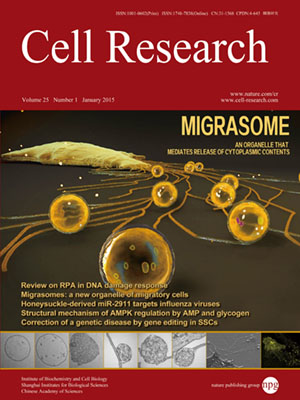
Volume 25, No 1, Jan 2015
ISSN: 1001-0602
EISSN: 1748-7838 2018
impact factor 17.848*
(Clarivate Analytics, 2019)
Volume 25 Issue 1, January 2015: 9-23
REVIEW
RPA-coated single-stranded DNA as a platform for post-translational modifications in the DNA damage response
Alexandre Maréchal1 and Lee Zou1,2
1Massachusetts General Hospital Cancer Center, Harvard Medical School, Charlestown, MA 02129, USA
2Department of Pathology, Massachusetts General Hospital, Harvard Medical School, Boston, MA 02114, USA
Correspondence: Alexandre Maréchal, E-mail: amarechal@mgh.harvard.edu; Lee Zou,(zou.lee@mgh.harvard.edu)
The Replication Protein A (RPA) complex is an essential regulator of eukaryotic DNA metabolism. RPA avidly binds to single-stranded DNA (ssDNA) through multiple oligonucleotide/oligosaccharide-binding folds and coordinates the recruitment and exchange of genome maintenance factors to regulate DNA replication, recombination and repair. The RPA-ssDNA platform also constitutes a key physiological signal which activates the master ATR kinase to protect and repair stalled or collapsed replication forks during replication stress. In recent years, the RPA complex has emerged as a key target and an important regulator of post-translational modifications in response to DNA damage, which is critical for its genome guardian functions. Phosphorylation and SUMOylation of the RPA complex, and more recently RPA-regulated ubiquitination, have all been shown to control specific aspects of DNA damage signaling and repair by modulating the interactions between RPA and its partners. Here, we review our current understanding of the critical functions of the RPA-ssDNA platform in the maintenance of genome stability and its regulation through an elaborate network of covalent modifications.
10.1038/cr.2014.147
FULL TEXT | PDF
Browse 1892


